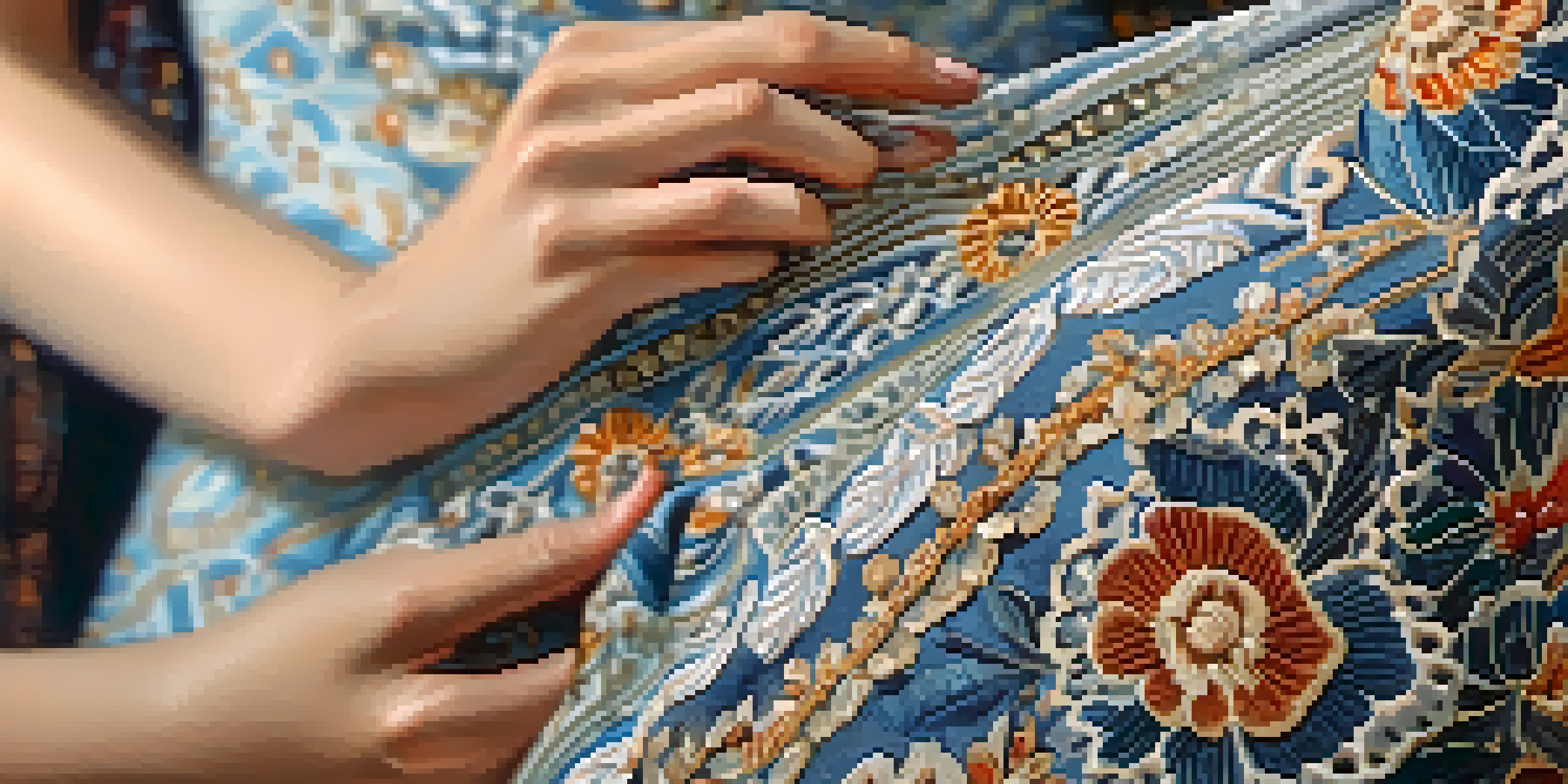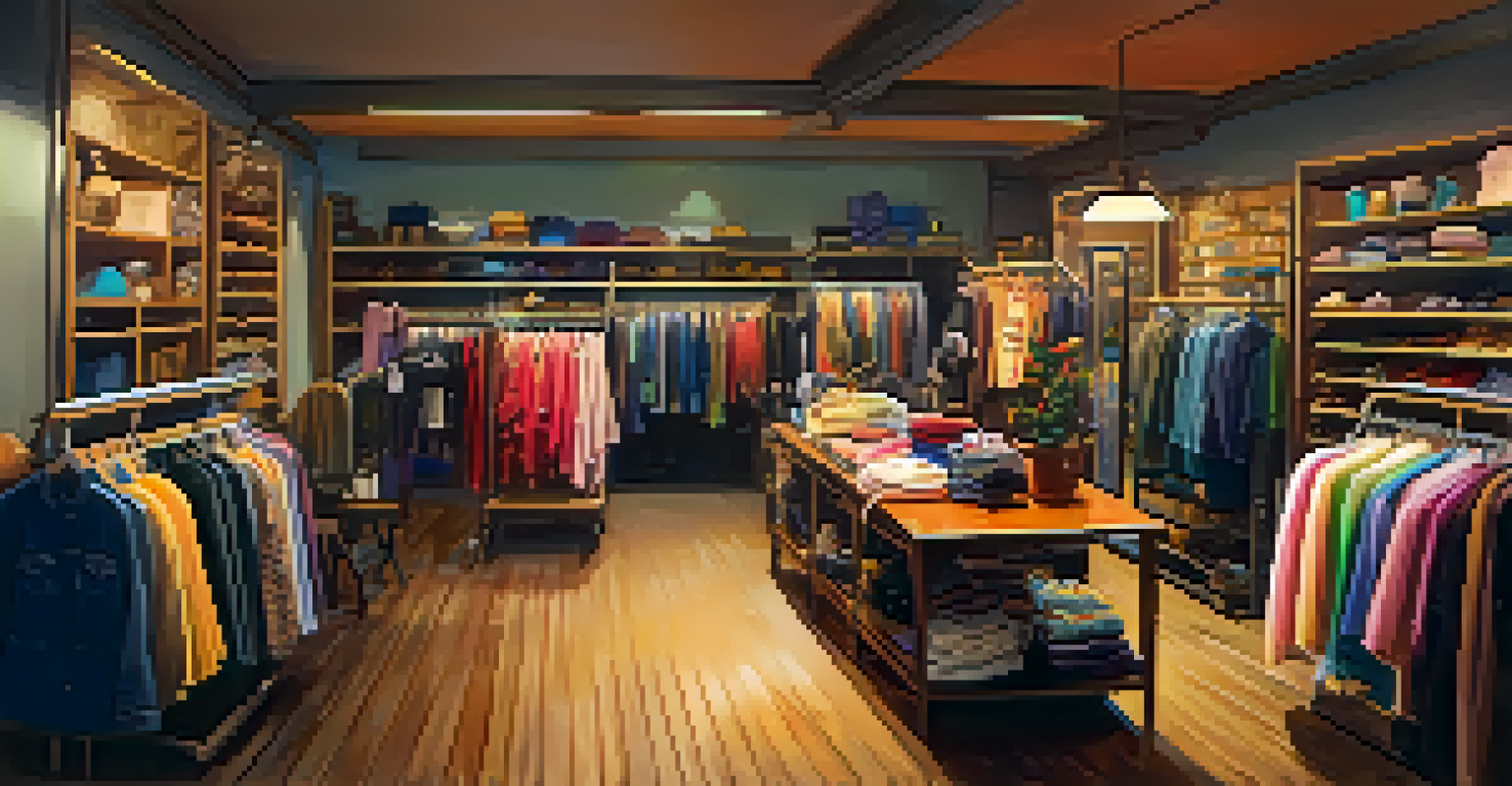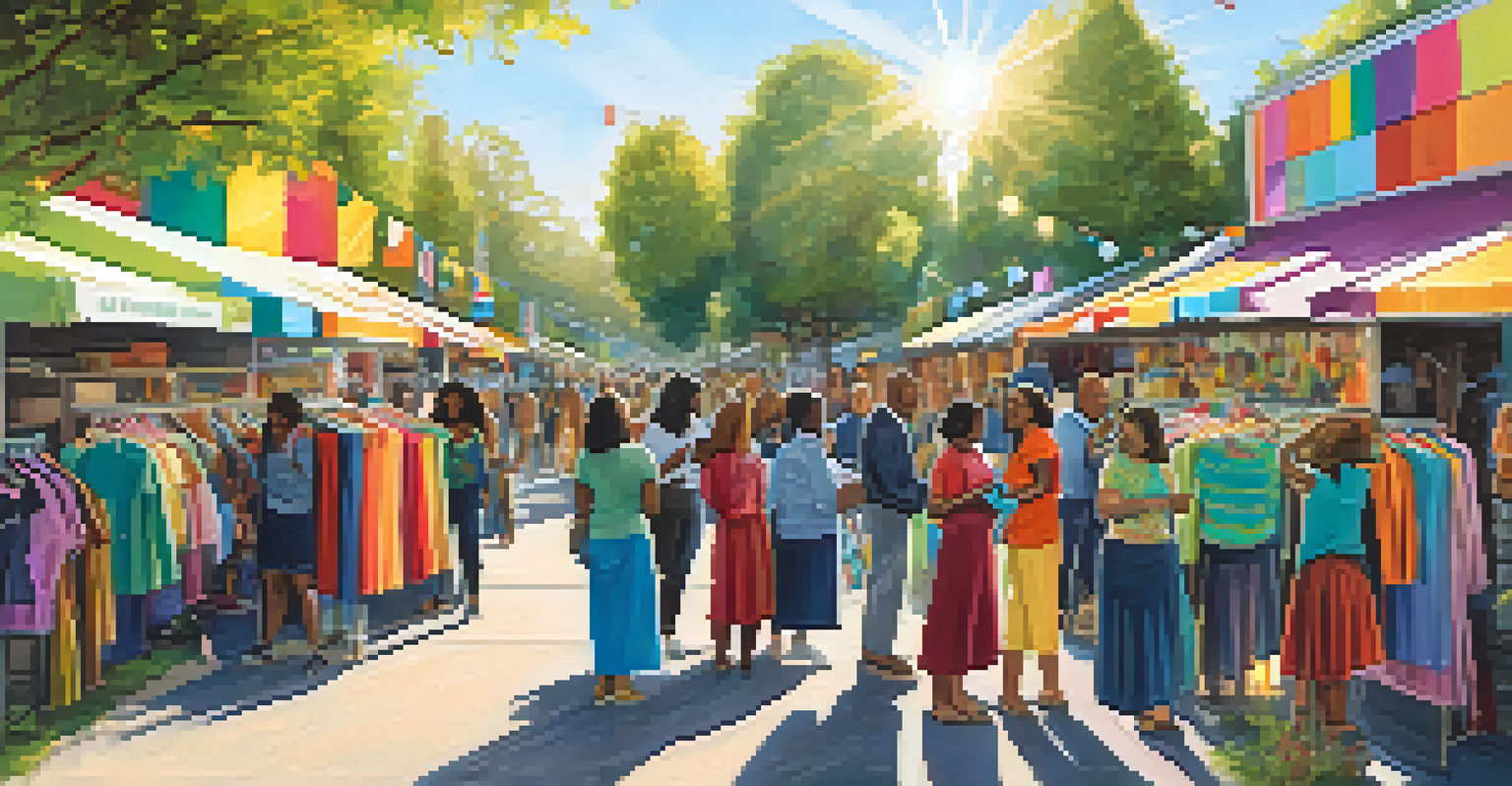The Rise of Second-Hand Fashion: A Sustainable Trend Today

Understanding Second-Hand Fashion and Its Appeal
Second-hand fashion, often referred to as thrift or vintage shopping, has gained popularity in recent years. Many consumers are drawn to the unique finds and the nostalgia associated with pre-loved items. This trend not only allows shoppers to express their individuality but also promotes a more sustainable approach to fashion consumption.
The best fashion show is definitely on the street. Always has been, and always will be.
As we become more aware of the environmental impact of fast fashion, second-hand shopping offers a refreshing alternative. It encourages people to look beyond brand new items and consider the stories and experiences attached to used garments. This shift in mindset is helping to redefine our relationship with clothing.
Moreover, second-hand fashion often comes with a lower price tag, making it accessible to a wider audience. With thrift stores, online marketplaces, and clothing exchanges popping up everywhere, finding stylish, affordable options has never been easier.
The Environmental Benefits of Second-Hand Shopping
One of the most significant advantages of second-hand fashion is its positive impact on the environment. By purchasing used clothing, we help reduce the demand for new production, which often involves resource-intensive processes. This means less water consumption, fewer chemicals, and a decrease in textile waste in landfills.

In fact, the fashion industry is one of the largest polluters globally, with millions of tons of clothing thrown away each year. By opting for second-hand items, consumers can actively participate in combatting this issue and support a circular economy where items are reused and recycled.
Second-Hand Fashion's Unique Appeal
Second-hand fashion allows consumers to express individuality while promoting sustainability through pre-loved items.
Additionally, buying second-hand encourages a more mindful approach to consumption. When we choose to purchase pre-loved items, we become more aware of our buying habits and their implications, fostering a culture of sustainability.
A Shift in Consumer Mindsets Towards Sustainability
As the conversation around sustainability grows louder, consumers are becoming increasingly conscious of their choices. Many people now view fashion not just as a means of self-expression but also as a statement about their values. This shift is driving the popularity of second-hand fashion.
Fashion is about dressing according to what’s fashionable. Style is more about being yourself.
Younger generations, especially Millennials and Gen Z, are leading the charge in prioritizing sustainable brands and thrift shopping. They are more likely to research the origins of their clothing and support companies that align with their eco-friendly beliefs. This cultural change is reshaping the fashion landscape.
Social media platforms have also played a significant role in this transformation, with influencers showcasing their thrifted finds and encouraging their followers to adopt similar practices. As more people share their experiences, the stigma surrounding second-hand fashion diminishes, making it a mainstream choice.
Innovative Platforms Revolutionizing Second-Hand Shopping
The rise of technology has given birth to numerous platforms dedicated to second-hand fashion, making it easier than ever for people to buy and sell used clothing. Apps like Poshmark, Depop, and ThredUp allow users to shop from the comfort of their homes while discovering unique items from around the world.
These platforms also foster a sense of community among users, as they can connect with like-minded individuals who share a passion for sustainable fashion. In essence, they create a marketplace that thrives on the principles of reuse and collaboration.
Environmental Impact of Thrifting
Purchasing second-hand clothing reduces demand for new production, helping to combat pollution and promote a circular economy.
Moreover, many traditional retailers are now embracing the second-hand trend by offering buy-back programs and consignment options. This evolution signals a broader acceptance of second-hand shopping as part of the fashion industry’s future.
The Unique Charm of Vintage Fashion
Vintage fashion, a subset of second-hand shopping, has a special allure that captures the imagination of many. Each piece often comes with a history, allowing wearers to connect with different eras and styles. This charm makes vintage shopping an exciting treasure hunt rather than just a shopping experience.
With the unique designs and craftsmanship found in vintage items, shoppers often feel a sense of individuality that mass-produced clothing cannot provide. Wearing vintage allows individuals to stand out and express their personal style in ways that are often more authentic.
Additionally, vintage pieces are often made from higher-quality materials that stand the test of time, making them an investment in both style and sustainability. This aspect further enhances their appeal in a world that increasingly values quality over quantity.
Challenges and Misconceptions About Second-Hand Fashion
Despite its growing popularity, second-hand fashion is not without challenges. Some consumers still harbor misconceptions about the quality and cleanliness of used clothing. This stigma can deter potential buyers from exploring the benefits of thrift shopping.
It's essential to remember that many second-hand items are in excellent condition or even brand new, often with tags still attached. Numerous thrift stores and online platforms have strict quality controls, ensuring that what they sell is wearable and stylish.
Changing Mindsets on Sustainability
Younger generations are increasingly prioritizing sustainable choices in fashion, leading to the mainstream acceptance of thrift shopping.
Overcoming these misconceptions requires a collective effort, from educating consumers about the advantages of second-hand shopping to promoting success stories of those who have embraced this sustainable lifestyle. As knowledge spreads, so does acceptance.
The Future of Second-Hand Fashion and Sustainability
Looking ahead, the future of second-hand fashion appears bright. As sustainability becomes an integral part of consumer decision-making, the demand for pre-loved items is likely to continue growing. This trend presents an opportunity for the fashion industry to evolve and adapt to changing consumer values.
Brands that embrace sustainable practices, including offering second-hand options or creating circular systems, are more likely to resonate with today’s eco-conscious shoppers. This shift could lead to a more responsible fashion landscape where sustainability and style coexist harmoniously.

Ultimately, the rise of second-hand fashion signifies a larger movement towards sustainability in our daily lives. By choosing to shop second-hand, we not only reduce our environmental footprint but also support a more ethical and responsible approach to fashion.